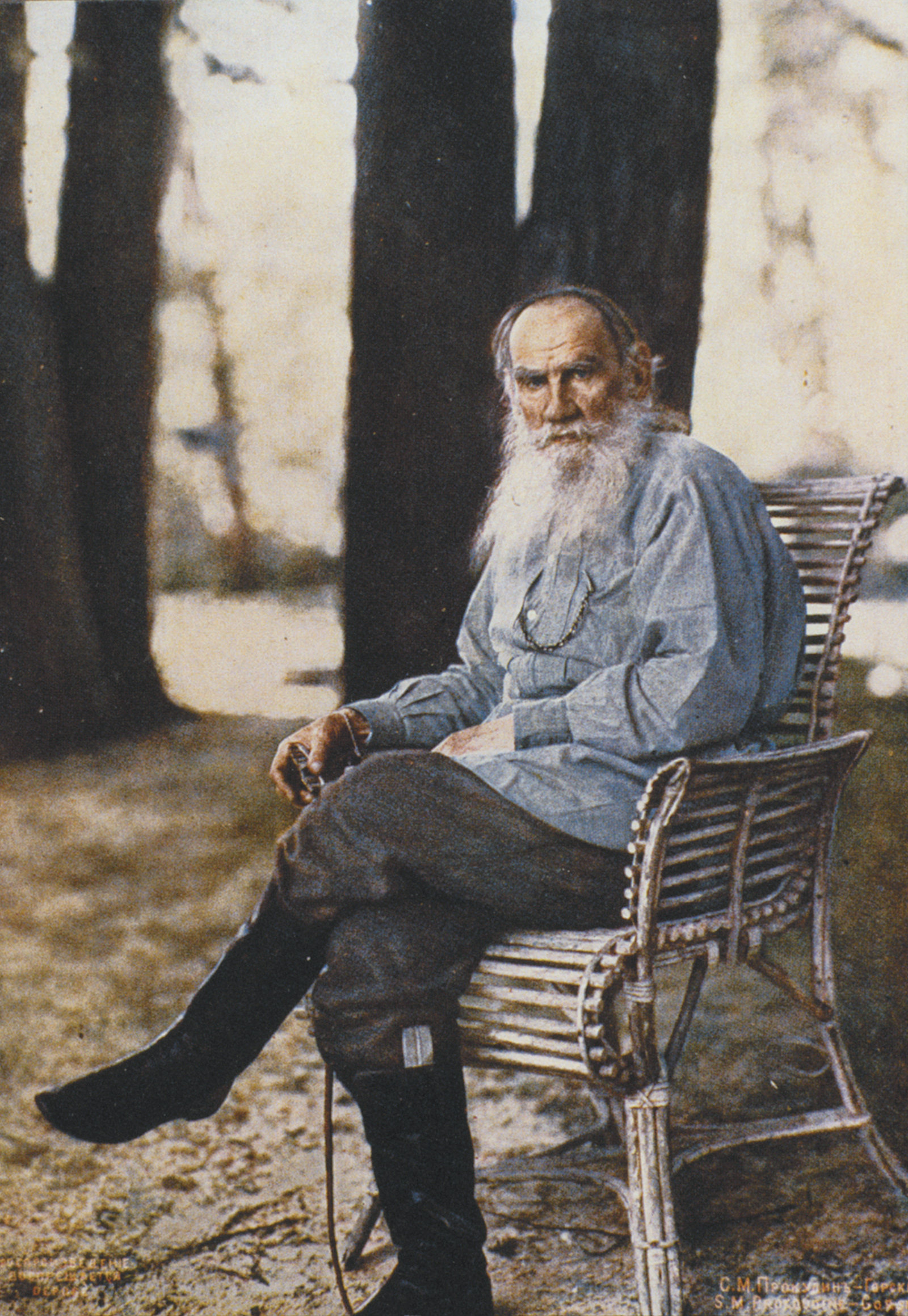In response to:
Socks from the June 23, 2016 issue
The following letters were written in response to Janet Malcolm’s essay on translations of Anna Karenina in the June 23 issue.
To the Editors:
In Janet Malcolm’s appreciation of our translations, entitled “Socks,” there is a small mistake in one quotation from our Anna Karenina. It reads: “…despite the sharp contrast, from a man’s point of view, between Levin and Vronsky, as a woman she saw what they had in common, for which, too, Kitty had loved them both.” I mention it only because the passage caused a flurry of agreement about the poor quality of our work on the Slavic blog site SEELANGS: “What is this ‘too’ doing? Does it relate to ‘which,’ or to ‘Kitty’? If the latter, then it is in the wrong place—and for no good reason. In English we say, ‘Kitty, too, loved him’; we do not say ‘Too, Kitty loved him.’” In fact, our translation of the passage reads: “for which Kitty, too, had loved them both.” But nobody checked.
Richard Pevear
Distinguished Professor Emeritus
American University of Paris
Paris, France
To the Editors:
Not even an acute critic like Janet Malcolm is qualified to pass judgment on a translator’s work if she has no knowledge of the text in its original language. It is one thing to express a preference for the spontaneous and graceful style of Constance Garnett, with those fine short sentences that Hemingway so admired, over the more ponderous renderings of Richard Pevear and Larissa Volokhonsky. However, it is quite another to put up your dukes as Malcolm does and demand:
What side are you on? Whose interests should the translator serve? Those of the reader of simple wants, who only asks of a translation that it advance rather than impede his pleasure and understanding? Or those of the more advanced (or masochistic) school who want to know what the original was “like”?
As a translator (of early Italian and Portuguese texts) and lifelong reader of Russian literature in translation, I would argue that the translator serves the author and the original text. Period. How he goes about doing so depends upon his approach and style; but assuming that he is competent and scrupulous, the result will be a reliable translation. The reader may or may not enjoy it, but that is purely a matter of taste. On the other hand, it is not a matter of taste whether the author is well or poorly served, as Milan Kundera’s account of the various translations of The Joke makes very clear.
It goes without saying that translation is an impossible task, fraught with pitfalls, and that the result can never be more than an approximation. Personally, as a translator I try to create a window onto the text, as fine and transparent as I can make it. And personally, as a reader I love the translations of Pevear and Volokhonsky because I always sense the presence of the original behind the window. I also love Garnett’s translations, for all the reasons that Janet Malcolm adduces, although I always feel I am reading an English novel set in Russia. Her Anna Karenina creates the illusion that it is something in its own right, like Chapman’s astonishing Iliad or the delightful Don Quixote of Tobias Smollett.
Fair enough, but the difference between a translation that reads like a novel written in the language of translation and one that makes room for the original in the reader’s mind seems to me to be worthy of note, and both approaches seem worthy of respect.
Alice Sedgwick Wohl
Colares, Portugal
To the Editors:
As a translator of Russian writers, including Tolstoy, I would like to respond to Janet Malcolm’s discussion of what, in her cri de coeur on versions of Anna Karenina, she took to be a Tolstoyan “neologism.”
Commenting on Marian Schwartz’s translation of the novel, Malcolm wrote:
The following instance of Schwartz’s obtrusive literalism was clearly deliberate. It occurs in an exchange between Stiva and his servant Matvey about the upset in the Oblonsky household following Dolly’s discovery of his affair with the governess. Stiva wants Matvey’s opinion of whether Dolly will take him back. Garnett writes:
“Eh, Matvey?” he said, shaking his head.
“It’s all right sir; it will work out,” said Matvey.
“Work out?”
“Yes, sir.”
Schwartz writes:
“Eh, Matvei?” he said, shaking his head.
“It’s all right, sir, things will shapify,” said Matvei.
“Shapify?”
“I’m certain of it, sir.”
The neologism “shapify” is Schwartz’s attempt to render Tolstoy’s neologism obrazuetsia (derived from the word obraz, meaning image or form). Tolstoy reintroduces his invention a few pages later. “Stepan Arkadyevich liked a good joke. ‘And perhaps things will shapify! A fine turn of phrase: shapify,’ he thought. ‘I must repeat that one.’” But where the Russian neologism is funny, the English one is merely weird. It stops the reader in his tracks.
The word in question, obrazovat’sia, given to Matvey in a conjugated form (“Nichego, sudar’, obrazuetsia”), is not in fact a neologism at all, nor is it meant to be funny (the “good joke” refers to Stiva’s ponderous witticism about the German clock master who visits the Oblonsky home every Friday). There is, however, more at stake here than the accurate identification of a lexical category, or the intention of a phrase, and the issues deserve an extended analysis. In regard to the Russian word itself, there are two main aspects: the morphological and the semantic.
The morphological aspect is straightforward. The root obraz is very old, going back at least a millennium, and is found not only in Old Russian and Old Church Slavonic but also in other Slavic languages. The derivational suffix –ovat’, used to turn the root noun into a verb, is very well established, too, and so is the additional reflexive suffix –sia that makes the transitive verb an intransitive, passive one, as in the usage in question: obraz-ovat’-sia. Thus the structure of the word was not new, nor were any of its elements; it was and is a very standard Russian verb with a deep history and not a neologism either for Tolstoy in Anna Karenina, or for Goncharov in Oblomov in the 1850s, or for the critic Belinsky in the 1840s, or for Pushkin in the 1820s and 1830s in the several places that he used it.
This means that any translator wishing to render obrazovat’sia in English must respect the brute historical fact that, unlike the bizarre word “shapify” cited by Malcolm, it is not an unusual form at all but rather a very ordinary one that does not call attention to itself as such (something that would in any case have been quite uncharacteristic of Tolstoy, whose innovations were syntactic and in the sheer cognitive wealth, range, and precision of his vocabulary).
The semantic aspect is more complex. Because of its long history, the word has multiple meanings, some archaic or obsolete, some still active, some more colloquial, some less so, but all overlapping in their basic sense, and all—as with any usage—affected by the various ways in which the word has been employed. Briefly, the root obraz denotes an image, a representation, a picture, or an icon (it is commonly used that way in current Russian), and, by extension, a form, with the verb meaning, in modern Russian, to represent or depict (to produce an image of), to constitute, to give form or a form to, to result in, or even to educate (as in the formation of a mind).
Some of those meanings and others were latent, at least to some degree, in Matvey’s colloquial use of the word, but the one that is operative is the one that Stiva made so by selecting it, by eagerly seizing upon it and repeating it, thereby providing (as Tolstoy contrived it, for the issue here is the intricacy of his art) what will for the attentive reader have been a moment of rich thematic implication.
For if obrazovat’sia is not a neologism, then one must ask what it is that gives Stiva such pleasure. Not that the word is somehow a new one but rather that it is, for him, an agreeably apt use of an old one, a word that proposes a sort of indifferent, in-the-natural-course-of-things resolution for his distress—an easy, perhaps even slightly cynical abstracting by his friend and servant of the fraught human circumstance in which Stiva’s casual moral ineptitude has placed himself and everyone else, and the implications of which he has not fully grasped, as Tolstoy shows us again and again.
Matvey has offered him a comfortable lexical evasion, so to speak, a “nice little word” (“slovechko,” as Stiva says in very colloquial Russian) that he can, moreover, eventually include in a story for effect (more evidence of his skewed moral orientation, of his aesthetic view of life), and that almost punningly represents for him that the situation with which he is faced is merely a formal one, an idea that the rest of the novel will of course in various ways refute. The word, which was thus for Tolstoy a kind of thematic pivot or node, essentially means, as Garnett correctly indicated, that things will work out, will come out all right in the end; that chaos will sort itself out and the previous form and arrangement of things and relations will return, almost by themselves and unscathed, in the “inevitable rhythm” of life, as the charming but shallow Stiva self-indulgently conceives it.
In short, there is much more involved in obrazovat’sia than the meretricious “shapify” would seem to recognize. In an apparent attempt to mimic Russian morphology—to substitute a contingent form for a necessary meaning—the translator has obscured the subtlety and precision of Tolstoy and deprived the reader of a possible ramifying insight.
This raises another, more general question about the translation of classic literature. It is not, of course, enough to “know” Russian when translating Tolstoy. One must also try to understand his Russian and the relationship of that Russian to the larger history of the language and, no less obviously and importantly, to the particular artistic purposes, not always conspicuous, that may be at play, even on the supposedly minute or trivial lexical level. And then (and this was Malcolm’s essential point in regard to Garnett) one must, besides philological knowledge and critical ability, also have the verbal skill and tact to convey vividly or movingly or amusingly what one has seen and felt and learned as a sort of privileged foreign agent of one’s own speech community—as a direct and responsible observer of another place and time and language, another vital matrix of custom and meaning and beauty.
And one must try to do that both as a scholar and as a supposed verbal artist. For fine translation, despite the trite division of the two realms, will be both scholarship and art, each reinforcing the other, as the translator strives to convey with disciplined judgment and imagination the extraordinary complexity and subtlety of the brilliant work he has been given the enormous responsibility of representing to others.
Judson Rosengrant
Portland, Oregon
This Issue
September 29, 2016
Maya Lin’s Genius
The Heights of Charm
How They Wrestled with the New



